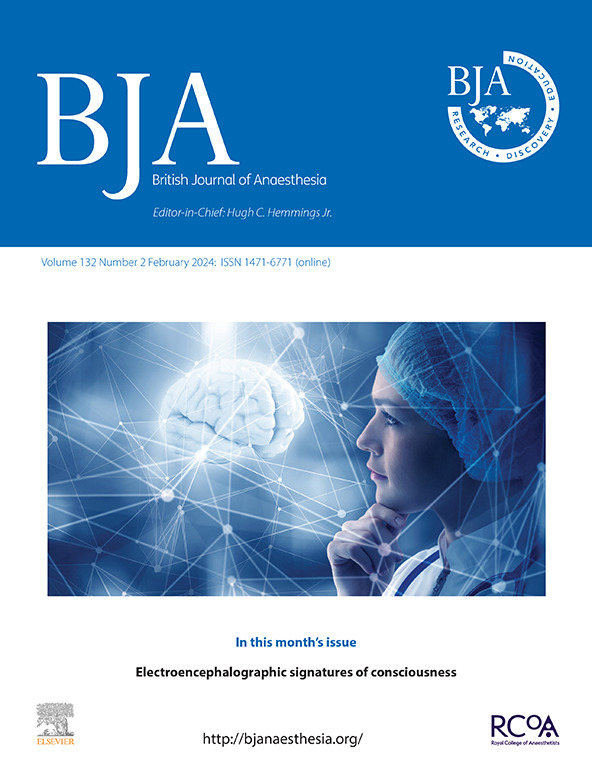P2X4R-BDNF-TrkB介导的小胶质细胞-神经元通讯促进了肌肉疼痛慢性中的突触可塑性和前扣带皮质亢进。
IF 9.2
1区 医学
Q1 ANESTHESIOLOGY
引用次数: 0
摘要
小胶质细胞与神经元之间的交流对于疼痛的发生和维持至关重要。然而,这种相互作用的确切机制及其在前扣带皮层(ACC)回路中疼痛调节中的作用仍在探索中。方法探讨ACC的p2x4r -脑源性神经营养因子(BDNF)-TrkB信号通路在肌肉疼痛(MP)调节中的作用。机械和热痛阈值以及开放现场测试用于评估疼痛和焦虑样行为。通过高尔基染色、透射电镜和膜片钳记录来评估突触可塑性的变化。同时,cFos染色和钙显像证实了神经元的兴奋性。此外,我们使用化学遗传学和光遗传学方法来操纵ACC神经元的活动。结果慢性MP大鼠前扣带皮层兴奋性增强,突触可塑性增强。小胶质细胞抑制减轻了疼痛和焦虑样行为。此外,小胶质细胞P2X4R促进BDNF的表达,BDNF通过TrkB调节ACC的神经元兴奋性和突触可塑性;这些作用被P2X4R敲低和TrkB抑制逆转。化学遗传学和光遗传学抑制ACC多动可缓解慢性MP和焦虑样行为。结论小胶质细胞与神经元之间通过P2X4R-BDNF-TrkB信号通路进行交流,增强前扣带皮层突触可塑性和皮层兴奋性,从而参与肌肉疼痛的调节。了解如何评估和调节小胶质细胞-神经元通讯和异常皮层活动将是开发MP疾病新疗法的关键。本文章由计算机程序翻译,如有差异,请以英文原文为准。
Microglia-neuronal communication mediated by P2X4R-BDNF-TrkB promotes synaptic plasticity and anterior cingulate cortex hyperactivity in muscle pain chronicity.
BACKGROUND
Microglia-neuronal communication is crucial for the development and maintenance of pain. However, the exact mechanisms underlying this interaction and its role in anterior cingulate cortex (ACC) circuitry in pain regulation are under exploration.
METHODS
We explored the role of P2X4R-brain-derived neurotrophic factor (BDNF)-TrkB signalling of ACC in regulating muscle pain (MP). Mechanical and thermal pain thresholds along with open field tests were used to assess pain and anxiety-like behaviours. Golgi staining, transmission electron microscopy, and patch-clamp recordings were performed to evaluate synaptic plasticity changes. Meanwhile, cFos staining and calcium imaging substantiate the neuronal excitability. In addition, we used chemogenetic and optogenetic approaches to manipulate ACC neuronal activity.
RESULTS
The ACC exhibited increased excitability, together with enhanced synaptic plasticity in rats with chronic MP. Microglial inhibition alleviated pain and anxiety-like behaviours. Furthermore, microglial P2X4R promoted BDNF expression, which acted on TrkB to regulate neuronal excitability and synaptic plasticity in ACC; these effects were reversed by P2X4R knockdown and TrkB inhibition in MP. Chemogenetic and optogenetic suppression of ACC hyperactivity relieved chronic MP and anxiety-like behaviours.
CONCLUSIONS
Our findings highlight a critical microglia-neuronal communication via the P2X4R-BDNF-TrkB signalling, which enhances synaptic plasticity and cortical excitability in the anterior cingulate cortex, thereby participating in the regulation of muscle pain. Understanding how to assess and modulate microglia-neuronal communication and abnormal cortical activity will be key to developing novel therapies for MP disorders.
求助全文
通过发布文献求助,成功后即可免费获取论文全文。
去求助
来源期刊
CiteScore
13.50
自引率
7.10%
发文量
488
审稿时长
27 days
期刊介绍:
The British Journal of Anaesthesia (BJA) is a prestigious publication that covers a wide range of topics in anaesthesia, critical care medicine, pain medicine, and perioperative medicine. It aims to disseminate high-impact original research, spanning fundamental, translational, and clinical sciences, as well as clinical practice, technology, education, and training. Additionally, the journal features review articles, notable case reports, correspondence, and special articles that appeal to a broader audience.
The BJA is proudly associated with The Royal College of Anaesthetists, The College of Anaesthesiologists of Ireland, and The Hong Kong College of Anaesthesiologists. This partnership provides members of these esteemed institutions with access to not only the BJA but also its sister publication, BJA Education. It is essential to note that both journals maintain their editorial independence.
Overall, the BJA offers a diverse and comprehensive platform for anaesthetists, critical care physicians, pain specialists, and perioperative medicine practitioners to contribute and stay updated with the latest advancements in their respective fields.

 求助内容:
求助内容: 应助结果提醒方式:
应助结果提醒方式:


